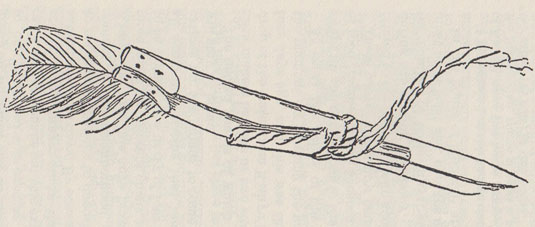Hopi Journal of Alexander M. Stephen [SOLD]
 Forward to Friend
Forward to Friend
- Subject: Hopi
- Item # C3664
- Date Published: 1936 - Hardback
- Size: 2 Volumes Set SOLD
Hopi Journal of Alexander M. Stephen.
Elsie Clews Parsons, editor, Columbia University Press, New York: 1936.
Hardback, 2 vols. lii, 1417 pp., frontispiece, 25 pls., 531 figs., 12 maps.
This Strictly Limited Edition of 150 Hardback copies, 2-volumes, published by Martino Fine Books, Connecticut, and Ethnographic Arts Publications, California. 2001
This copy is #89 of 150. New, never been read.
Following description excerpted from AMERICAN ANTHROPOLOGIST, 1938
Very little is known of the author of this remarkable journal. He was born in Scotland, and served in the Union Army throughout the American Civil War. As early as 1881, at least, he was in the Hopi country; there he lived until his death in 1894. Why he went there and how he sustained himself is not known. Stephen lived on intimate and friendly terms with the Indians for many years, living in their households and sharing their daily life. He conversed with them in the Hopi language as he acquired some proficiency in this tongue; virtually none of the Hopi spoke English in those days. Stephen began to record his observations in 1882, but it was not until 1890 that he undertook to record systematically the ceremonial and daily social life of the people: the bulk of his field notes are for the years 1891 to ’93, inclusive. He was a careful and diligent observer, a meticulous recorder. He did not regard Indians as inferior beings but viewed their ways with sympathy and an understanding rare in a white man. In addition to his written descriptions, Stephen made hundreds of very fine drawings, some in color, of paraphernalia and costume; diagrams of kivas and ceremonies; and topographic maps, which are reproduced here.
Stephen had free access to all ceremonies, except those of the War society, and was himself inducted into three societies, including the Snake society of Shipaulovi. He participated slightly in their ceremonial life, such as planting beans at Powamu and depositing prayer sticks. And, finally, as he lay ill in his house shortly before his death, he was treated by a Hopi medicine man, the ritual of which he faithfully records. The Journal is devoted almost exclusively to the towns of First Mesa: the Hopi pueblo of Walpi, and the Tewa town of Hano, although there are bits of information concerning Second and Third Mesas as well. The bulk of the Journal consists of descriptive accounts of the major Hopi ceremonies. But there is also a great deal of information on many other subjects, such as cooking, farming, hunting, kin and clan, the girl’s adolescent ceremony: contacts between the Hopi and their Indian and white neighbors.
Dr. Elsie Clews Parsons’ contribution to this Journal in its published form has been tremendous, much greater, probably, than will be generally appreciated. Fortunately she was spared the tortured labor of deciphering poorly written field notes, for Stephen wrote a good hand. But the enormous industry, patience and pains, and vast knowledge of the Southwest which she has lavished upon the Journal have contributed in large measure toward making it one of the most valuable and usable works in our entire literature on the Pueblos. First of all, she has provided a “Preface” and an “Introduction” which serve to orient the reader and to place the Journal in its proper perspective. She has grouped together the descriptions of each ceremony for various years and has prefaced them with an appropriate introductory note. Illuminating and informative footnotes are interspersed freely throughout. Odds and ends, culled from Stephen’s notebooks, have been arranged systematically in a 300-page appendix. An extensive glossary of terms (125 pp.) and a very full index (87 pp.), add greatly to the usefulness of the Journal. The Journal naturally does not pretend to give a complete exposition and interpretation of Hopi culture. Nevertheless, it does provide, thanks to its editorial presentation, a better introduction to Hopi ethnography than any other single work which we have at present. Stephen’s Hopi Journal will remain a veritable treasure house as long as the study of Pueblo ethnology shall last.
LESLIE A. WHITE, 1936

- Subject: Hopi
- Item # C3664
- Date Published: 1936 - Hardback
- Size: 2 Volumes Set SOLD
Publisher:
- Martino Fine Books - Martino Publishing
- P.O. Box 913
- Eastford, CT
- 860-974-2277
- martino@martinopublishing.com
- http://www.martinopublishing.com/


